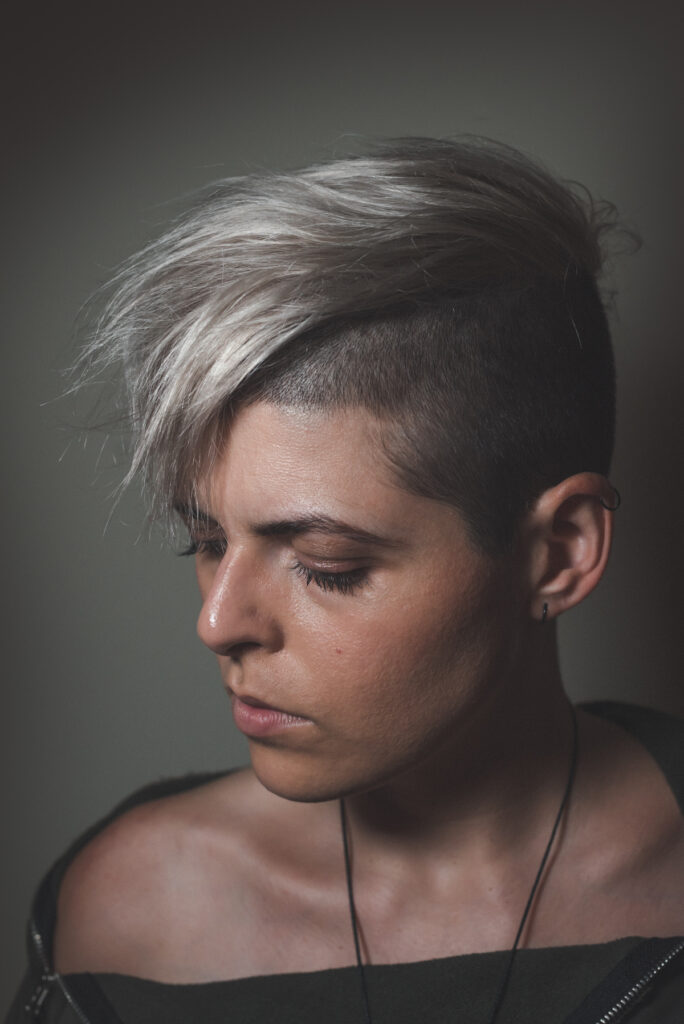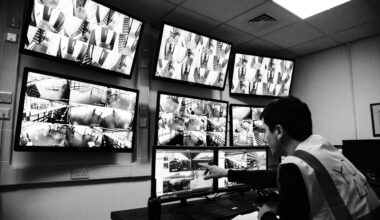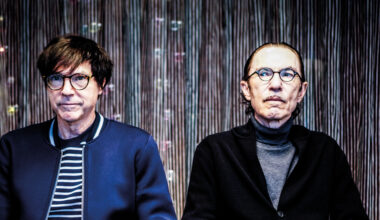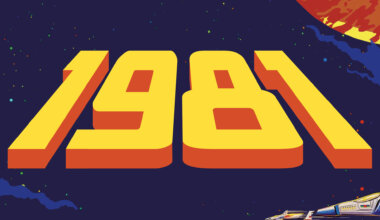Of late, it’s not just Paranoid London who are reviving the squirming electronic funk of the acid sound. The underground is teeming with producers, DJs and events powered by the 303…
“I think the sound of a 303 tweaking is just one of those noises that connects with humans,” says I Love Acid’s Josh Doherty, explaining the evergreen appeal of the famous bass synth. “It’s like the Amen break, or the distorted guitar of rock and metal.”
Pulsing, burrowing and invading brains for over 30 years, acid is the electronic sound that refuses to die. The eternal throb of the TB-303 synthesiser, first marketed by Japanese manufacturer Roland in 1981 as a bass generator for guitarists to practice along with, has found its way onto countless records across all genres. It has driven multiple styles of dance music from acid house to techno, and today has a horde of acolytes harnessing its alien noises and electrifying a new generation’s dancefloors.
At the forefront are the likes of Paranoid London, whose sleazy, rough-edged acid beats nod to the original Chicago house producers, such as Phuture, Adonis and Chip E. Their latest album, ‘PL’, found them working with A Certain Ratio, the late Alan Vega and Josh Caffe. Yet there are many other artists currently making vital acid, and the distinctive off-world squelch of the 303 is having another of its many periodic resurgences.

American acts like Jared Wilson, Lauren Flax and Beyun, Australians such as Lou Karsh, and UK names like Chris Moss Acid all make music with a hefty dose of 303, while long-running acid master Luke Vibert continues to twist out freaky rhythms, as heard on his incredible ‘Valvable’ album released earlier this year. DJ Jerome Hill, a fixture of the subterranean circuit since 1990, has also been slamming out acid cuts, with last year’s ‘Mole Hole Acid’ a particular gem.
Add to that labels such as I Love Acid (also a club night), Weapons Of Desire and Furthur Electronix, and events like Memory Box, and you have all the ingredients of a revival.
“Acid has never really gone away, but it certainly rises and falls in and out of fashion, like all good genres of music,” continues Josh Doherty, who also runs the Balkan Vinyl label and makes 303-laced tunes with Richard Bevan under the name Posthuman. “New ideas form, new people hear it for the first time, it becomes saturated, people move on, the cycle continues. There are rubbish genres that don’t stand the test of time, but anything real never actually dies, it only hibernates.”
Doherty is a lifelong devotee of the acid sound and his labels have released music from many of the newer acid adherents, including tracks like the thunderous sulphuric sleaze of Maxime Alexander’s ‘Take My Hands’. For him, acid is not an exercise in nostalgia, but a sound very much alive, with a young crowd discovering its thrilling musical extremities. It’s to this crowd that Doherty appeals, both with his releases and his club nights.
“While there is certainly a nostalgia scene around acid, I tend to avoid that world,” he says. “At my club night, I’m always trying to reach new people as well as older heads. The crowd is usually really diverse in terms of age and I look to book new acts alongside established ones.”
Popular it may be in the dance underground, but acid is still profoundly weird. With its neon electric wriggle, this distinctive synth noise is unmistakable in sound. The latter point might be why it retains its appeal after all these years.
“Maybe it’s universally loved because nothing else in the world sounds like it,” says Brooklyn’s Lauren Flax, whose 2018 track ‘It’s Ours’ is one of the greatest recent acid tunes. For Flax, who has released via labels like Unknown To The Unknown, The Bunker New York and NY staple Nervous, acid has everything you need to make a great dance track.
“The manipulation of character within the device means you can tell a big story with plenty of drama, just with a rhythm machine and the 303,” she says. “It has that ability to rile the crowd up, and can just as easily bring the energy deep down. I think it’s the storytelling that makes the 303 most interesting.”
Although she reckons the prohibitively expensive original 303 synth sounds the best, Flax also thinks that the new wave of remakes, both by Roland and others, has opened up creative possibilities.
“Nothing beats the depth of the original 303,” she notes. “And given that there were only about 10,000 made, it’s pretty expensive to get. I use the TB-03. The good thing about a Roland boutique piece is that it will expand on ways you can program it. It’s a lot easier to program the TB-03 and there are new ways to get even more creative with it.”
Anil Lal, who runs Furthur Electronix, a UK label specialising in IDM, braindance and also more dancefloor-geared acid and breakbeat, reckons it doesn’t really matter how you make an acid tune – so long as it’s good.
“I don’t think this matters much as long as you have the ideas and the creativity behind what you do,” says Lal. “Some people may have the best equipment, but it doesn’t mean they are making the best music. In fact, I’ve heard some of the best music on very limited equipment, with some people using broken 303 machines and making a unique sound.”
It’s the artists on the fringes of the electronic scene that are creating some of the most compelling material, he adds. He’s specifically talking about the producers combining acid with experimental beats and strange atmospheres.
“I really love what some of these braindance artists are doing with acid, people such as Shinra, Brainwaltzera, EOD, Ceephax Acid Crew and Rolando Simmons. Obviously Aphex Twin and Luke Vibert are up there too. These artists just seem to be able to experiment and not give a fuck.”
DJ Pierre – one third of Phuture, arguably the forefathers of acid thanks to seminal tunes like 1987’s ‘Acid Tracks’ – continues to push the house side of the sound via his Afro Acid label. Along with his own productions, Pierre has released three ‘Acid 88’ compilations, aimed at showcasing upcoming producers as well as seasoned pros tweaking the silver box. The latest volume features current artists like Acidulant, Type-303 and Hunter Lombard alongside legends like A Guy Called Gerald and Mark Archer from Altern-8. One of the newer artists included on the collection is Atlanta-based Beyun, who until recently also A&Red for Afro Acid alongside Pierre. Now focused on her own Vault Wax label, Beyun describes hearing acid for the first time as like an auditory epiphany. She thinks the same thing happens to many people when they initially encounter it.
“If you’ve never heard acid before, I guarantee it will force you to stop what you’re doing and ask, ‘What is this?’,” she says. “It’s such a unique sound and so different from what a commercially-trained ear is used to. Yet it’s not so foreign that you immediately reject it, because something about it is deeply familiar. When you grasp how powerful it must be for this sound to draw you to its presence and be in the moment, you want to know exactly what acid is. This is what happens with each new generation as it discovers acid.”
Beyun points out that a key feature of most acid tracks is that the sound constantly evolves and changes throughout a tune, as the producer changes the frequency, resonance, accent and other parameter knobs. This element alone makes acid very striking.
“You have to manipulate the knobs and it needs to be done live,” she says. “As a producer, you have to be in the moment if you want an audience to join you on that trip. I’m not saying that the whole track has to be recorded live, but the acid in the track should be live and physical. It needs to be emotional. Acid shouldn’t be just a static bassline programmed into a Roland TB-303 or any equivalent clone, because then there is no journey to take and no emotion that can be inserted into that sound.”

An aspect of acid that Paranoid London have tapped into is the stripped-back, physical nature of the sound. At a time when everything is available at the touch of a button (or even a voice prompt), there’s something satisfying about returning to a tactile human interaction with a bare-bones musical set-up, rather than relying on endless slick but bland software emulations. The Caulfield Beats – Lawrence Northall and Molly Dixon – are a London duo whose skeletal acid house explorations, such as the self explanatory ‘Acid Pt 1’, adhere to this sparse philosophy.
“The appeal of acid is in its rawness and simplicity,” says Dixon. “There’s definitely a shift in dance music beause people are bored with hearing technically perfect and soulless audio. They’re looking for more spontaneity and more reality. Acid goes back to basics, and in doing so it creates an aesthetic that reflects this impulse. The sound of the TB-303 perfectly embodies that drive.”
The Caulfield Beats also identify another deeper reason why acid (and by extension other forms of underground dance music) keeps coming back with such regularity.
“Acid has a very visceral kind of sound and is pretty cathartic,” she says. “Forms of music associated with degeneracy are often situated on the cultural fringes of society. They become an expression of dissatisfaction with the status quo and open an alternative space for people to exist in, as well as a cultural language with which people can identify. When you don’t feel you belong in society or want to temporarily escape from it, you inevitably turn to these spaces as windows of possibility and belonging, or as an act of resistance. Our society is not always the healthiest place to be. People will continue to seek out spaces of refuge and hope.”
Though acid may be flavour of the month, there are a number of factors that point to its continuing popularity. Among them, reckons Josh Doherty, is the availability of several new machines that do the job of the TB-303 as well as the original.
“There are some great new clones and replicas on the market,” he says. “The RE-303 is a total rebuild and it sounds amazing. The Cyclone Analogic TT-303s are great too, especially the version 1s, which are discontinued, and AudioRealism’s ABL3 emulator is also excellent.”
That said, Doherty warns that just because there are plenty of shiny bits of kit on the market, it doesn’t mean making a decent acid track is easy. It’s a sentiment echoed by Lauren Flax.
“There are a lot of sub-par acid tracks out there now,” she says. “So you really have to commit to pushing the boundaries to make a standout track.”
Doherty thinks the future of acid is secure in the hands of producers such as Maxime Alexander, Jared Wilson and Granary 12, as well as DJs like Volvox, while Lauren Flax points to Vin Sol, Jimmy Edgar and Traxmen as upholders of the acid doctrine. Ultimately, reckons Doherty, it’s the malleability of acid that means it will continue to burn on and on.
“Since acid is really about a sound rather than strictly a genre, the possibilities of fusing it with other styles of music are endless.”






